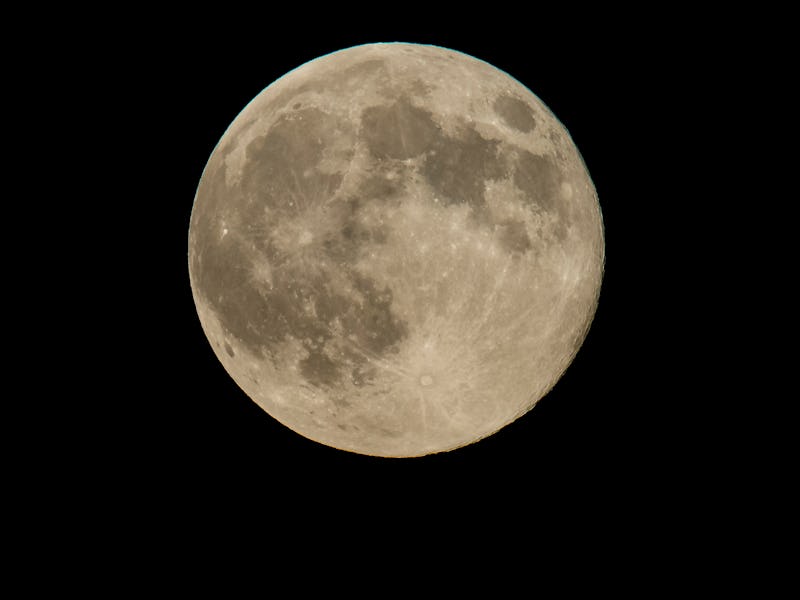You need to see these celestial objects tonight shine bright under the new Moon
The new Moon marks the beginning of a new lunar cycle.

Over a period of 27 days, 7 hours and 43 minutes, the Moon goes through its lunar cycle which varies in its perceived brightness and size in our night skies.
On Monday, the Moon will embark on a new lunar phase marked by the new Moon. As the Moon beings its new cycle, it will appear at its most faint which allows for other celestial objects to shine even brighter.
And as always, we're here to direct your eyes skywards and tell you what to look out for in order to appreciate the wonders of the cosmos.
The Moon's lunar cycle is marked by a few milestones. At the peak of its cycle, a small sliver of the Moon’s crescent gradually appears in our skies as it waxes to become a full Moon. After that, it begins to wane into invisibility once more, before beginning anew.
What part of the Covid-19 pandemic do you think causes the most confusion? We want to know. Take the Inverse reader survey
The Moon goes through different phases during its montly cycle, varying in perceived size and brightness.
However, at the beginning of its cycle, the Moon is on the same side of the Earth as the Sun, with its dark side facing our planet. As a result, it appears as though our natural satellite has gone almost invisible to us.
On the other hand, as the Moon fades into celestial existence, it is a great opportunity for sky gazers to marvel at other objects in the night sky.
Saturn at opposition
Monday night also happens to be the day when Saturn will be at opposition.
A planet coming in opposition means that they come directly opposite of the Sun, perfectly aligning with the Earth and the host star. As a result, Saturn's planetary body will appear even brighter to us as it soaks in the light coming from the host star.
Therefore, Saturn's disk and its surrounding rings will be visible in the night sky through a small telescope right after sunset.
Jupiter at opposition
Much like Saturn, Jupiter also arrived at opposition just a week ahead of its planetary neighbor. The largest planet of the Solar System will remain visible to sky gazers who want to marvel at Jupiter and Saturn in conjunction this month.
Jupiter appears as a bright, silver star in the sky, that can be observed by a pair of binoculars and the gas giant's four moons will also be visible through a small telescope.
Comet NEOWISE
Comet NEOWISE made its closest approach to the Sun on July 3, and has been visible to sky enthusiasts since then.
With the Moon's light fading in the celestial backdrop, it is the perfect time to view this traveling comet as it makes its journey through the inner Solar System and give us Earthlings the brightest comet display in decades.
The comet is visible to the naked eye, but a handy pair of binoculars will provide a better view. By mid-July, comet NEOWISE will be visible at dusk just after sunset, appearing low in the northwest horizon, according to EarthSky.
The Pleiades star cluster
The Pleiades, also known as the seven sisters, is a famous star cluster known for its visibility from all across the world. Under the darkness of the night sky on Monday, the star cluster will shine even brighter.
The cluster is composed of more than 800 hot, B-type stars located in the northwest of the constellation Taurus at a distance of a little over 400 light years away from Earth. The stars all formed around the same time from the same cloud of gas and dust, living out to a few hundred million years.
In order to locate the Pleiades star cluster, sky gazers should first look for the Orion constellation, and follow the bow upwards which should lead you to Pleiades.
Andromeda galaxy
As the Moon pales in tonight's sky, it is the best time to view the Andromeda galaxy. As the closest neighboring galaxy to our own Milky Way, Andromeda is the most distant celestial object that you can view with the naked eye from Earth.
The spiral galaxy is located 2.5 million light years away from Earth, and is about 40% larger than the Milky Way. Andromeda appears as a hazy cluster of bright objects to the naked eye, and a pair of binoculars will enhance your view of our galactic neighbor.
This article was originally published on